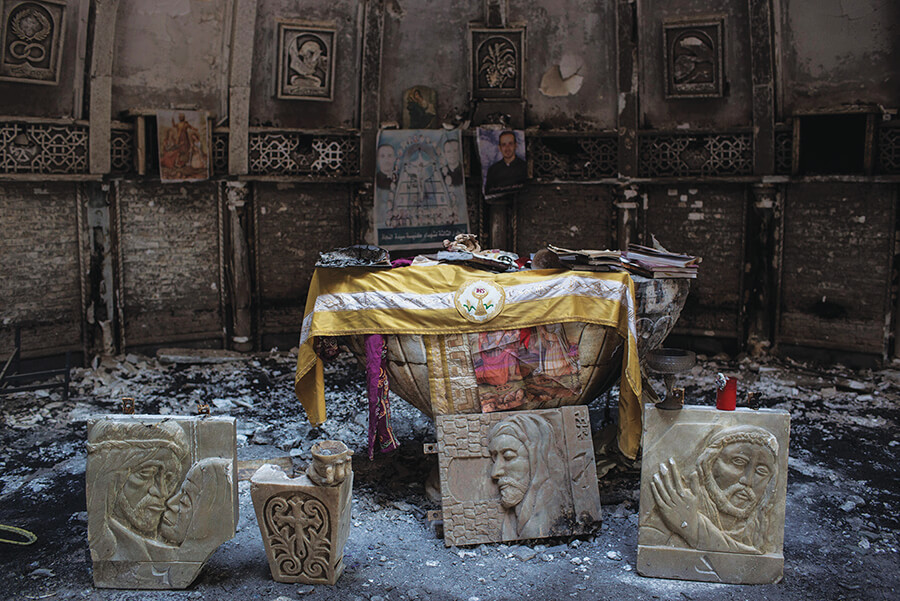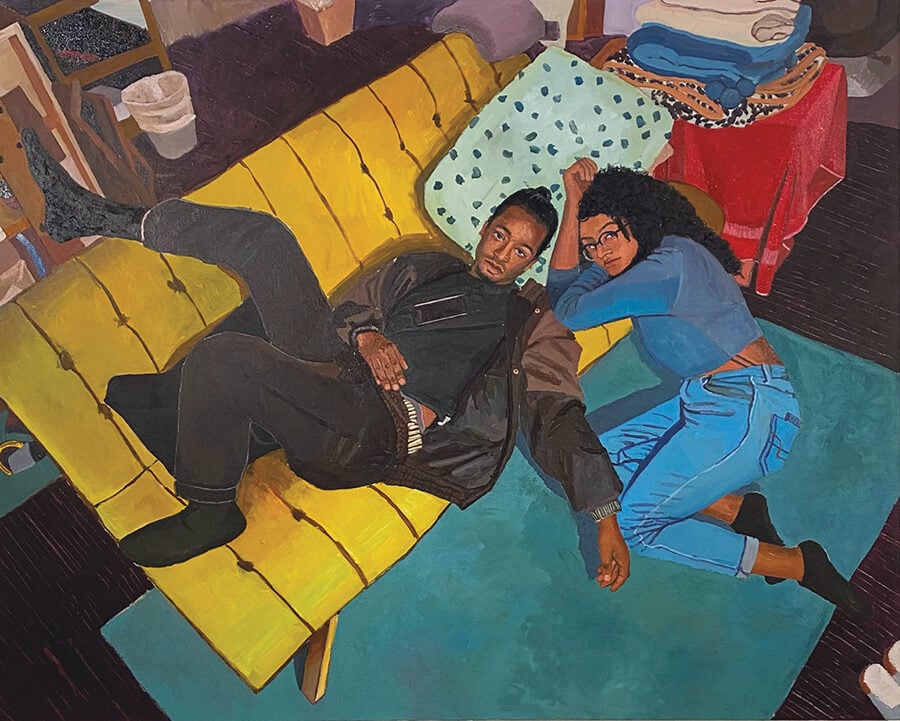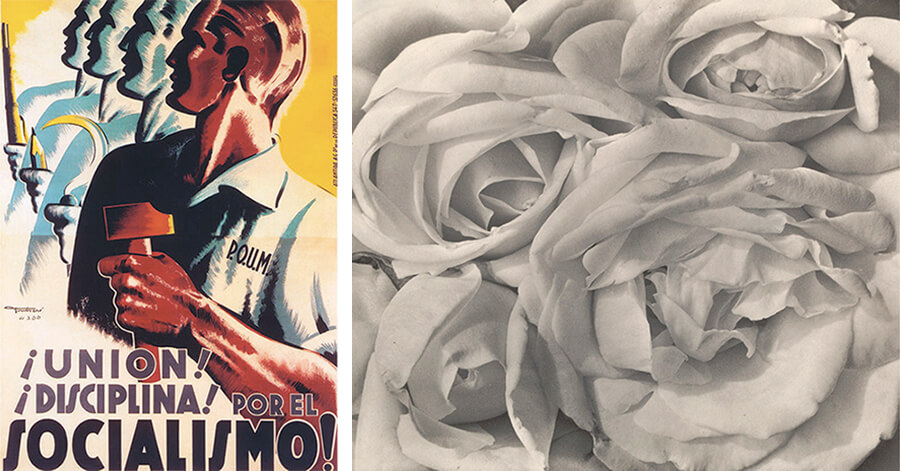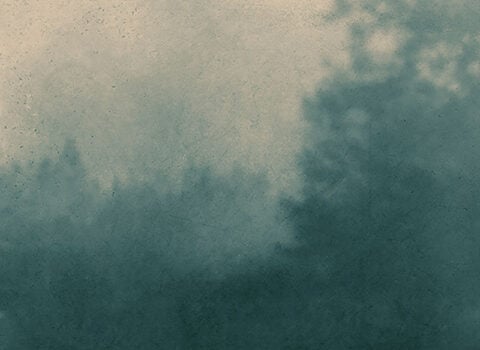
A church destroyed by the Islamic State in Qaraqosh, Iraq, December 2016 © Chris McGrath/Getty Images
The longtime war reporter Janine di Giovanni’s powerful new book, The Vanishing (Public Affairs, $30), began, in her own words, as “a way of understanding how Christians in the Middle East, the birthplace of Christianity, have survived in the most turbulent of times.” She has devoted sections to Iraq, Gaza, Syria, and Egypt, traveling to each “to try to record for history people whose villages, cultures, and ethos would perhaps not be standing in one hundred years’ time.”
But di Giovanni’s book is also highly personal: raised Catholic, her faith recently restored, she frames her introduction and conclusion with moving details about her religious upbringing and the circumstances of her pandemic lockdown in the French Alps, where ritual and tradition provided solace. This account of her faith contributes to the force of her reporting, but does not cloud it. She expresses her distress, for example, regarding Trump Administration policies that privileged Christian over Muslim refugees; she is clear about the ways in which national and regional instabilities have frequently superseded sectarian divisions, and about the fact that other minority religious communities have been affected, sometimes even more drastically. Writing of the flight of Iraq’s Jewish population, she recalls a friend of Iraqi-Jewish descent who, at the behest of worried families abroad, found himself scouring Baghdad for remnants of the city’s Jewish community, “showing up unannounced to the homes of these stunned and terrified people, and then [handing] them his phone so they could tell their families they were alive.”
But the focus of her book, which grew out of an article published in this magazine, is on Christian communities, and in each country she discovers an inexorable decline. Egypt, which has the largest Christian population in the region, was “a majority-Christian nation until the fourteenth century,” di Giovanni writes, whereas Christians now constitute only 10 percent of the population. In a more recent and swift diminishment, Syria had approximately 1.1 million Christians before the civil war and has reportedly lost more than seven hundred thousand of them.
The flight of Christians is in part, of course, about opportunity—in many instances, Christians have found it easier to emigrate, and to find better living conditions for their families in Europe or North America. But the irreversible societal changes in these countries are matched also by the loss of vital histories: the number of monks worshipping at the ancient monastery of Mar Mattai, near Mosul, Iraq, had dropped from more than seven thousand in the ninth century to just five by the time of di Giovanni’s visit.
For Christians around the world, the disappearance of some of the faith’s oldest communities is cause for serious concern. (Pope Francis made a trip to Iraq in March to express support for the country’s Christians, and prayed in the reconsecrated Church of the Immaculate Conception in Qaraqosh, which di Giovanni describes visiting after its destruction by the Islamic State in 2014.) Prompted in part by violence and political upheaval, the decline in the Christian population is also, inevitably, an important indication of the intolerance and rejection of religious and cultural diversity in the region.
The individuals di Giovanni interviews provide a rich portrait of these threatened communities, and of the wider societies they inhabit. She visits embattled priests in Iraq, genteel aging sisters in Gaza, a Christian zabaleen (“recycler” or “garbage collector”) in Cairo, and his wonderfully nicknamed compatriot, Big Pharaoh, bringing us their voices and the concrete details of their lives. “Nearly every Christian I interviewed for this book,” di Giovanni writes, “used the same word over and over, in different languages, to express why they continued to believe, despite, despite, despite: it is, they said, because of love.”

Seth and Iris, by Raelis Vasquez © The artist. Courtesy Jenkins Johnson Gallery, San Francisco and New York City
Love is, albeit complicatedly, the theme of Tiphanie Yanique’s novel Monster in the Middle (Riverhead Books, $27). Structured as a love story between Fly and Stela in contemporary New York (the last chapters unfold during the pandemic), the narrative explores the tangled family histories that these two people bring to their encounter, the generations of love—both triumphant and failed, both their own and their parents’—that ultimately lead to their meeting on a park bench.
The novel opens with a letter addressed to “Loves,” who are, we assume, Fly and Stela, but who might be any of us, signed “Your parents.” Its wisdom is straightforward: “You are not falling in love with that one person . . . you’re bringing it all. You’re bringing us.” The narrative proceeds first with the history of Fly’s African-American father and mother, and then of Stela’s Caribbean parents, including both her father and her beloved stepfather. The latter addresses her directly, and it is he who returns to the theme of ancestry, tying it to the novel’s title: “I could tell you more about my mother. . . . For even she is the monster—and her mother, too. . . . It’s a journey, but you’re not alone in it, my love. None of us is.”
Among other lingering traumas, Fly’s legacy includes schizophrenia, and Stela’s includes her mother’s childhood loss, by drowning, of her entire family. Grief is counteracted by passion—Yanique writes exuberantly about the pleasures of the body—but that, too, entails difficulties and misunderstandings. Each of the novel’s characters carries the residues of an initial love and its shattered illusions; these go on to shape the relationships that follow. After an early obsession with pornographic images of his father’s first wife, Fly experiences a romantic and sexual initiation that is bound up with religion: Suzanna, who invites him to join her church, seduces him in a variety of ways. Stela, meanwhile, devotes years to her first love, Johann, a white South African–born immigrant to St. Thomas. They expect to marry, until distance and dark experience pull them apart.
From California to Tennessee to Georgia; from Puerto Rico to South Carolina to the U.S. Virgin Islands, from Ghana to Colorado to New York City, the characters lurch from beginning to beginning, always bringing the past with them. Yanique inhabits many of their divergent points of view, among them that of young Earl, who becomes Fly, and somewhat less convincingly that of Mermaid, Stela’s mother, who curses incessantly and veers between relative inarticulacy and unexpected eloquence. Stela is approached only through free indirect style, never voiced in the first person; yet in some ways she is most fully the novel’s protagonist.
Themes of race, religion, class, and education appear throughout this ambitious novel, but its abiding focus is on the intimate, and the way broader social forces can impinge upon it. This culminates in a scene from the summer of 2020, when Stela and Fly find themselves catapulted into the particular terror, as black citizens, of being confronted at home by the police: “Stela was dreaming. She must be. She was a high school biology teacher who was spending the summer learning Google Classroom and tutoring summer students via Zoom.” While previous generations on both sides had survived more dramatic incidents, we understand that none have faced such an immediate and direct sense of threat.
Yanique, the author of the highly acclaimed Land of Love and Drowning and the winner of numerous awards, here retains only echoes of the magical realism that influenced her first novel. Rather, reality assumes a surreal tinge, and the fluidity of narration, across time, place, and characters, imparts an epic register to the intimate encounter between Stela and Fly. Though this episodic mode can, at times, diminish the novel’s narrative tension, the drama of its last fifty pages proves ample compensation.

Left: “Roses, Mexico,” 1924, by Tina Modotti. Courtesy the Museum of Modern Art, New York City. Right: Union! Discipline! For Socialism!, an antifascist poster depicting the Workers’ Party of Marxist Unification, in whose militia George Orwell served © akg-images/Pictures From History
“An epic register” could, perhaps unexpectedly, characterize Rebecca Solnit’s new book, Orwell’s Roses (Viking, $28), which is, on its simplest level, a tribute by one fine essayist of the political left to another of an earlier generation. But as with any of Solnit’s books, such a description would be reductive: the great pleasure of reading her is spending time with her mind, its digressions and juxtapositions, its unexpected connections. Only a few contemporary writers have the ability to start almost anywhere and lead the reader on paths that, while apparently meandering, compel unfailingly and feel, by the end, cosmically connected.
Solnit begins with the roses that George Orwell planted in 1936 in the garden of his rented cottage in Wallington, then moves to the time span of the natural world and the historical importance of roses. She looks in part at the Italian artist and revolutionary Tina Modotti’s famous 1924 photograph of roses (taken in Mexico, where she was friends with Diego Rivera and Frida Kahlo), and traces the artist’s support of Stalin, whom Orwell fiercely decried. Somehow, Solnit’s references to Ross Gay, Michael Pollan, Ursula K. Le Guin, and Peter Coyote (to name but a few) feel perfectly at home in the narrative; just as later chapters about an eighteenth-century portrait by Sir Joshua Reynolds and a visit to the heart of the Colombian rose-growing industry seem inevitable and indispensable.
At the core of this intriguing tangle of life, literature, politics, history, environmentalism, and aesthetics, Solnit places the suffragist Helen Todd’s 1910 slogan bread for all, and roses too, which would become a refrain for decades of activism, from the suffrage movement to the radicals of the 1970s and beyond: “Bread fed the body, roses fed something subtler: not just hearts, but imaginations, psyches, senses, identities.” Orwell himself, Solnit argues, understood this intimately. She cites a letter in which he “made a seamless transition from Old Testament wrath” to an account of a tiny hedgehog that had made its way into his bathroom. “It is often implied (or shouted) that if you enjoy hedgehogs you do not care about the evils of the age,” observes Solnit, “but they routinely coexist in experience and imagination.” Those who view Orwell only as a political writer fail to grasp the complexity of his agenda, which saw in the precise and beautiful deployment of language a responsibility both political and aesthetic.
The book provides a captivating account of Orwell as gardener, lover, parent, and endlessly curious thinker. For those not familiar with the scope of his work, who may know him only as the author of Animal Farm and Nineteen Eighty-Four, she provides the valuable context of his journalism and essays, from his book The Road to Wigan Pier, about mining in England, to Homage to Catalonia, about his experiences in the Spanish Civil War, to important essays such as “The Prevention of Literature” and “Politics and the English Language.” She elucidates his family history, though she is at liberal pains to distinguish him from his aristocratic ancestors, conceding, with American good cheer, to his own willed deracination with an ease of which his compatriots might be skeptical. She describes, too, the life force that drove him even as his health was in decline—he died of tuberculosis in 1950 at the age of forty-six. And, movingly, she takes the time to find the traces of Orwell the gardener and lover of beauty in his political novels, and in his insistence on the value and pleasure of things. As the protagonist muses in his novel Coming Up for Air: “There’s a kind of peacefulness even in the names of English coarse fish. Roach, rudd, dace, bleak, barbel, bream, gudgeon, pike, chub, carp, tench.” Before and beyond the political, Orwell delights in words themselves, and in the earthly things they signify.
Perhaps, in the end, what abides from this exhilarating tour d’horizon is a comment David Wojnarowicz makes to his fellow artist Zoe Leonard, who “was bashful about making beautiful images during the AIDS crisis”:
That’s what we’re fighting for. We’re being angry and complaining because we have to, but where we want to go is back to beauty. If you let go of that, we don’t have anywhere to go.

























































































